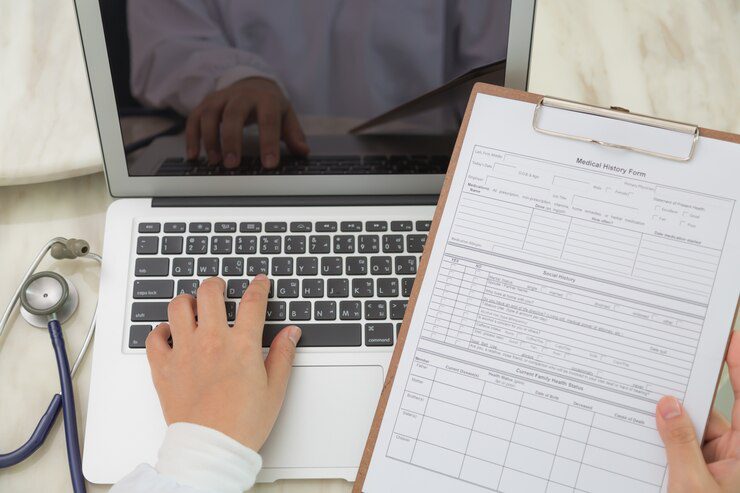Cracking the Code: Unveiling the Secrets of Coding for Medical Professionals
Introduction What is medical coding? Medical coding and billing is the process of obtaining information regarding a patient’s medical care—such as diagnosis, treatment, necessary medical equipment, and medical services—from medical records. The medical coder transforms this data into universal medical alphanumeric codes.To preserve correct medical records, a medical coder converts information from a patient’s medical records, including notes, lab results, treatments, and diagnoses, into universal Coding for medical professionals. These standardized codes are used by insurance companies and healthcare providers for billing and record-keeping purposes. This administrative role is important within the on-demand healthcare industry. Types There are three types of commonly known medical alphanumeric codes International Classification of Diseases (ICD) The World Health Organization (WHO) created this internationally used code. The classification system is largely used for health record and data collection purposes, among other things. Current Procedural Terminology (CPT): CPT the US, medical, surgical, and diagnostic services and procedures are identified with PT codes. This three-category system was devised by the American Medical Association (AMA): procedures and current medical practices, clinical laboratories, and new technologies. Healthcare Common Procedure Coding (HPCCS): The Centers for Medicare and Medicaid Services (CMS)developed this codind and billing system to help process insurance claims for Medicare or other providers. Codersuse them to record medical procedures, products, supplies, and services. Uses Coding for medical professionals is primarily used to ensure medical billing and proper payment and claims processing byinsurance carriers, but the system is also valuable for research purposes and maintaining basic medicalrecords for patients. Each code tells insurers, researchers and healthcare providers the exact diagnosis, procedure and/ormedical service provided. Responsibility of the medical coder: Ensuring the correctness of the medical records you transcribe and the codes you use is one of a medical coder’s main duties. Other medical coder job requirements include knowledge of various Coding for medical professionals and adherence to the medical coding and billing code of ethics. Some of the daily responsibilities of medical coding and billing jobs include: Medical Coding Vs. medical billing Medical billing deals with the financial exchanges between insurance companies and healthcare providers; medical coding does not. A medical biller is responsible for processing insurance claims, generating bills, and managing balances and payments for healthcare providers.Medical coding, on the other hand, only retrieves billing information and details from the patient record to convert them into medical coding. So even though both professions deal with medical documentation, they are actually completely different jobs. Medical coding and billing Salary A medical coder working in the US earns an average of $46,660 per year or $22.43 per hour [1]. Thissalary average includes all medical records and health information specialists, so it’s possible that youcould earn more than this average, depending on where you work, the certifications you hold, your levelof professional experience, and hours worked and/or shifts. Job prospects Medical coders are quite in demand. The BLS also predicts an additional12,300 jobs will be added between 2021 and 2031. kills the needy Insurance companies, healthcare providers and patients all rely on the accuracy of medical records.Attention to detail is therefore a must, as is knowledge of the coding and billing systems you will be using in yourparticular healthcare facility. If you want to become a medical coder, consider these key skills: Education requirements You don’t need any previous medical coding and billing experience to become a medical coder; however, manycertificate programs require at least one year of professional experience. If you need to gainprofessional experience before certification, consider applying for positions such as a billing assistant togain first-hand insight into the medical coding and billing process. Certification Medical coding and billing certification is a credential in healthcare coding and billing. It shows that you havelearned a specific medical coding and billing system or systems, along with the basics of how to translate a patient’s medical data into codes. If you decide to get medical coding and billing certification, you have many options. You can get a general coding and billing certificate or a special medical coding and billing certificate. You can also choose to stack multiple certifications. The most important thing to remember is to choose an accredited program such as the Practice Management Institute (PMI), the American Health Information Management Association (AHIMA), or the American Academy of Professional Coders (AAPC). Each of these accredited organizations has its own set of certifications, each with variations in the medical coding and billing system taught and application (ie, type of medical facility). You can earn general coding and billing certifications, such as the Certified Medical Coder (CMC) or Certified Professional Coder (CPC-A) certification, or specialty coding and billing certifications, such as urology or pediatric care. The certification you choose can help you achieve your ideal career path. Optional Certification Although certification is optional in many cases, a study conducted by the American Academy ofProfessional Coders (AAPC) found that certified medical coders earn 27 percent more than non-certifiedmedical coders .You can complete the certification program at any time during your medical coding and billing career. Some people earn a certificate to get a job in medical coding and billing , while others earn certificates after completing an associate’s degree. Some people get a bachelor’s degree, but it’s usually not a requirement. Eachemployer will have their own specific training requirements. How to become a medical coder? Getting started with medical coding and billing requires the following steps: 1. Meet the basic prerequisites The basic prerequisites for getting a medical coding job are to complete medical coding training. Thiscan be done through an associate degree program in medical coding, a medical coding certificate froman accredited organization, or in-house employer training. You will need a high school diploma or GED toqualify for the training. 2. Complete medical coding training If you decide to earn an associate degree in medical coding, look for a reputable program offered at acommunity college or vocational school. There are in-person and online options.If you’d rather get certified in medical coding, think about where you’d like to work. Then try to
Cracking the Code: Unveiling the Secrets of Coding for Medical Professionals Read More »



